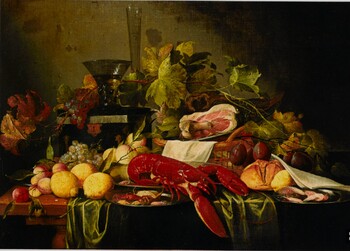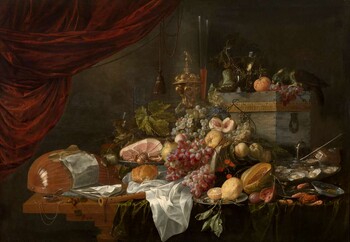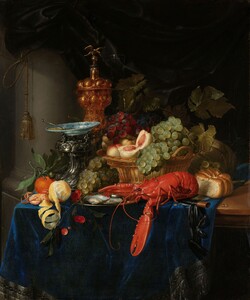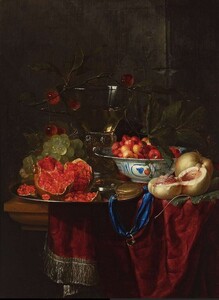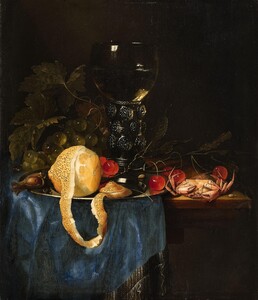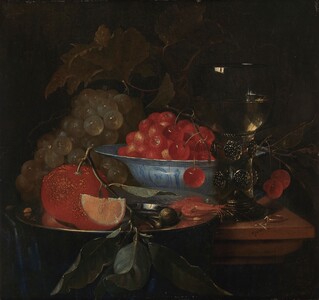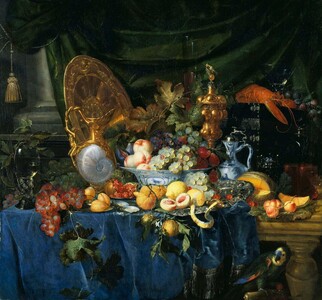Pieter de Ring
Still life with lobster
Oil on canvas : 89,5 X 116,8 cm
Signed with a ring on the table
Circa 1650
Bloomington, Indiana University, Sidney and Lois Eskenazi Museum of Art
This is a comparative item
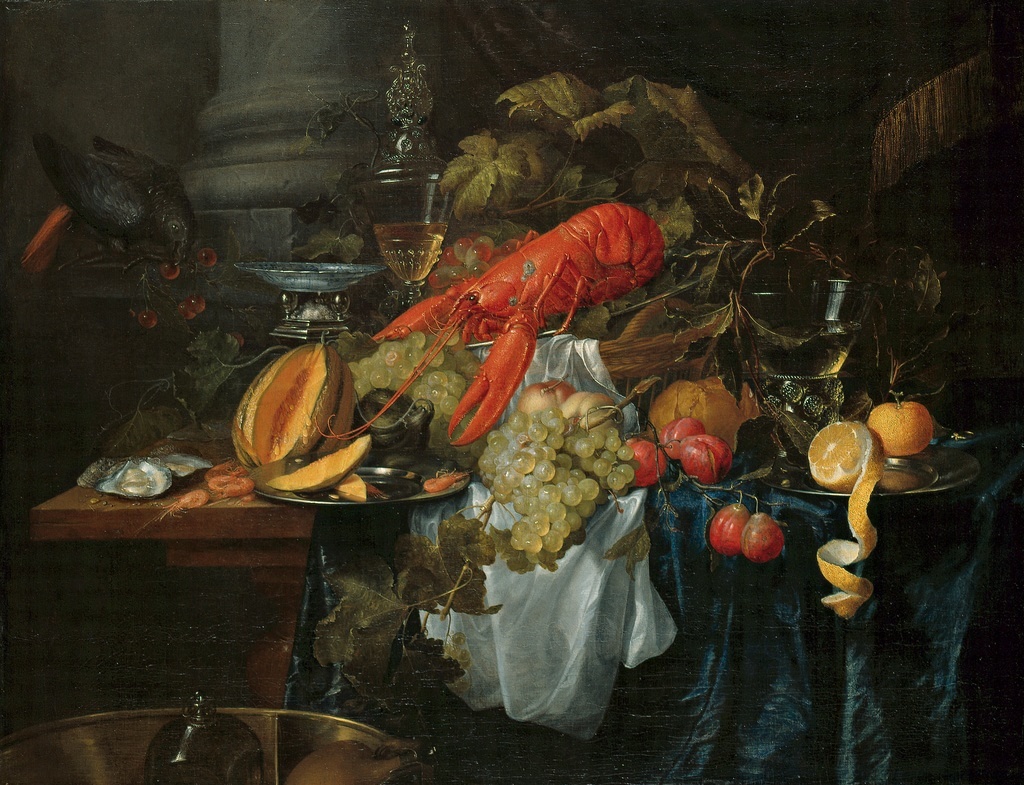
Painting for Sale
Comparative paintings
Click photos for more details

